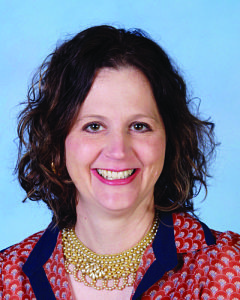How a 21st Century Librarian Enhances Student Learning
 Susan Gauthier, the director of library services at East Baton Rouge Parish Schools (LA) is completing her first year providing support for the school libraries and librarians of her district’s 87 schools. Previously, she was the library media specialist working with teachers and students at a middle school in Baton Rouge. Gauthier has also served as an educational technology consultant who developed and supported PD programs for the Louisiana Department of Education, and as a classroom math teacher. She was awarded the 2014 School Library Media Specialist Award from the Louisiana Association of School Librarians.
Susan Gauthier, the director of library services at East Baton Rouge Parish Schools (LA) is completing her first year providing support for the school libraries and librarians of her district’s 87 schools. Previously, she was the library media specialist working with teachers and students at a middle school in Baton Rouge. Gauthier has also served as an educational technology consultant who developed and supported PD programs for the Louisiana Department of Education, and as a classroom math teacher. She was awarded the 2014 School Library Media Specialist Award from the Louisiana Association of School Librarians.
THE Journal: How do you see the role of the school library in enhancing student learning?
Susan Gauthier: We talk a lot about the importance of addressing digital literacy, and to me that’s the secret sauce: It’s bringing in today’s world for the student. So, for example, I’m working on bringing makerspaces into our middle and high school libraries and coding in the elementary libraries. We’re using LiveBinders to develop portfolios for our librarian compass rubric, and we’re piloting a fiction e-book project. Anyone can check in and check out a book, but it’s about going a step beyond and bringing a different venue to the students.
THE Journal: What have you done with makerspaces?
Gauthier: To me we’ve always had this tool; they just weren’t called makerspaces. They were book clubs, crafting clubs, enrichment clubs … a makerspace to me is just labeling this cool space for you to go in and get in touch with your creativity. For nearly all of our middle and high schools, we are sharing what they’re doing to inspire ideas. Many of our schools don’t have a lot of resources, so we’re going to create MOMs — Makerspaces on the Move — with crates that the librarians can check out, bring in and use as something like a pop-up makerspace, whether it’s for physical items or for great apps.
THE Journal: How is this advancing student learning?
Gauthier: You might say it sounds like play time, but I see this eventually evolving into a curriculum connection: having that librarian talking to the science teacher and saying, “You are covering forces in motion? What’s something I can do with these Hot Wheels cars and tracks to reinforce that lesson?” You always hear teachers say that they’re so tied to the curriculum they can’t do the fun stuff; this brings that in.
THE Journal: Given the resource constraints, what else are you doing to “go a step beyond” for students?
Gauthier: One new collaboration that’s really exciting is called the Volumen project. The Louisiana State University Honors College created a card that gives access to the East Baton Rouge Parish Library’s resources online: its e-books, its music, its databases, everything. Now we’re distributing those cards to our students. Normally to be able to get to the online resources, your parents have to bring you to the library, sign papers, etc., and a lot of parents don’t do that. These are cards that we check out through our school libraries. For the kids to be able to access resources like TumbleBooks and Mango and all of the databases from home and from school … that’s pretty unusual.
THE Journal: How are you using LiveBinders?
Gauthier: LiveBinders help us present the things that we do that affect student learning. Administrators and community members don’t always see everything a librarian does. They don’t see the programming or the lessons that we’re providing — and as a result, many are going to para-professionals. A LiveBinder enables us to demonstrate what a certified librarian can bring to a school. We’ve just started with these, but I’ve used LiveBinders to show a cohort of elementary principals what one elementary school is doing. And next year we’re going to have the librarians use them to share with each other what they’re doing.
THE Journal: Why is it so important for school librarians to justify what they’re doing?
Gauthier: More and more librarians are getting written out of budgets, and if we’re not showing evidence that we’re making a difference for our students, our principals won’t know that and our librarians will be considered expendable or will be replaced by para-professionals — someone who doesn’t have skills like collection development or technology integration. We really have to be PR ninjas these days, making our contribution to student learning known to everyone. We can be co-teachers. I can go into a science classroom and I may not know all of the concepts, but I can help the students do research projects, I can support the teacher in using NoodleTools for creating bibliographies, I can provide support in using e-books and iPad apps. We can be a part of the learning process, making the library another classroom.
THE Journal: You’ve said it all comes down to advocacy for the student. What does that mean from the library perspective?
Gauthier: The bottom line is student achievement in all of the schools, whether you’re a librarian, teacher or administrator. We need to look at what our libraries are providing to our students and make sure students are getting what they need. Many times it’s technology — that’s where it is today — and so providing that through our school libraries is critical. We have to be doing more than just checking out books.